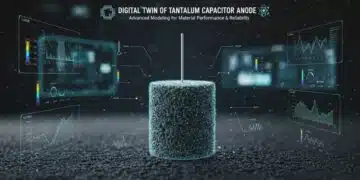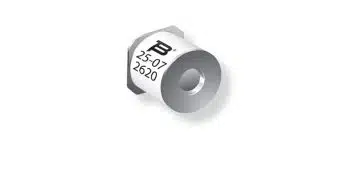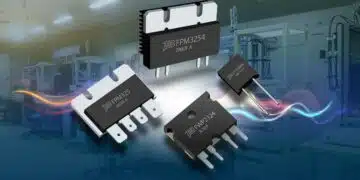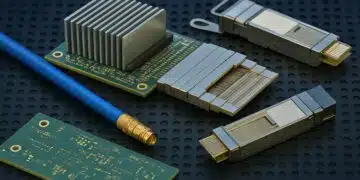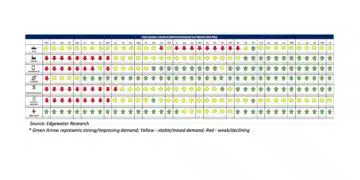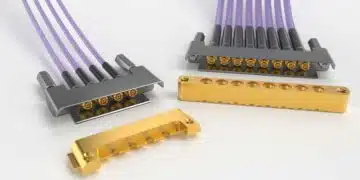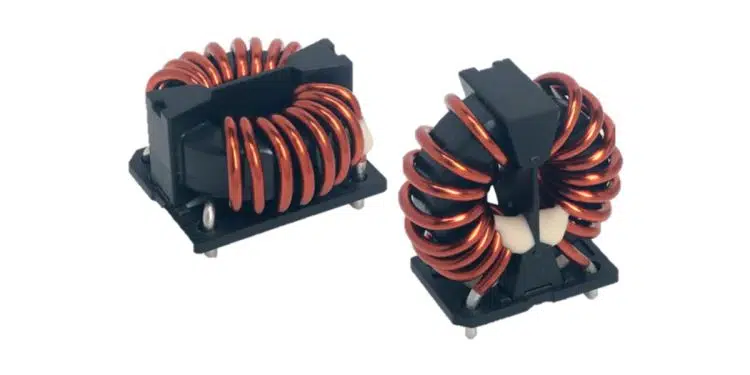As part of the YAGEO Group and leading global electronic components supplier, KEMET introduces its new SCF-XV series of 1kV AC/DC AEC-Q200 automotive grade common mode choke. This series fulfills the growing need for high voltage automotive and harsh environment industrial EMI filtering applications.
With a nanocrystalline metal core, SCF-XV achieves higher inductance, and impedance values, a broader frequency response, and a smaller footprint than other common mode chokes currently available.
The SCF-XV series offers up to 1,000 V AC/DC, the highest rated voltage. The nanocrystalline metal core results in a reduced footprint, rated current range from 5 to 35 A, DCR from 0.65 to 40.3 mΩ, an operating temperature from -40°C to +150°C, two different layouts (vertical/horizontal), and three different outer core diameters (19/25/29 mm).
The toroidal coils are designed with nanocrystalline metal cores and are useful in various noise countermeasure fields. These features position SCF-XV as an exceptional EMI suppression solution. This series addresses design engineers’ needs with a wide variety of characteristics for automotive and harsh environment industrial applications (robotics, high voltage power supplies, high reliability) and completes KEMET’s already existing automotive-grade common mode chokes portfolio including SCR-XV and SCT-XV.
Many solutions comparable to the SCF-XV use ferrite coils, are not always AEC-Q200 qualified, have a maximum 750 V AC/DC, and have a larger footprint. With a rated 1,000 V AC/DC and AEC-Q200 qualified, this series, together with SCR-XV and SCT-XV, is ideal for use in the EV automotive market. This series supports the industry’s trend to increase the vehicle-installed Lithium-ion battery pack voltage to limit drive train currents. With its space-saving and high characteristics, this series also addresses the trend of miniaturization and operation in harsh environmental conditions.
Applications include onboard chargers for EV/PHEV, E-compressors, wireless charging systems with 85 kHz, medium power drives for power steering, air conditioning, and mild hybrid 48 V systems.
Features
- Nanocrystalline metal core
- High rated voltage up to 1,000 V AC/DC
- Operating temperature range from -40°C up to +150°C
- Ultra-high inductance
- Ultra-high permeability
- UL 94 V–0 flame retardant rated base and cap
- AEC-Q200 qualified
Applications
- On board charger for EV/PHEV
- Wireless charging systems with 85 kHz
- Medium power drives for steering, air conditioning and mild hybrid 48 V systems
- High voltage automotive and harsh environment industrial EMI filtering


